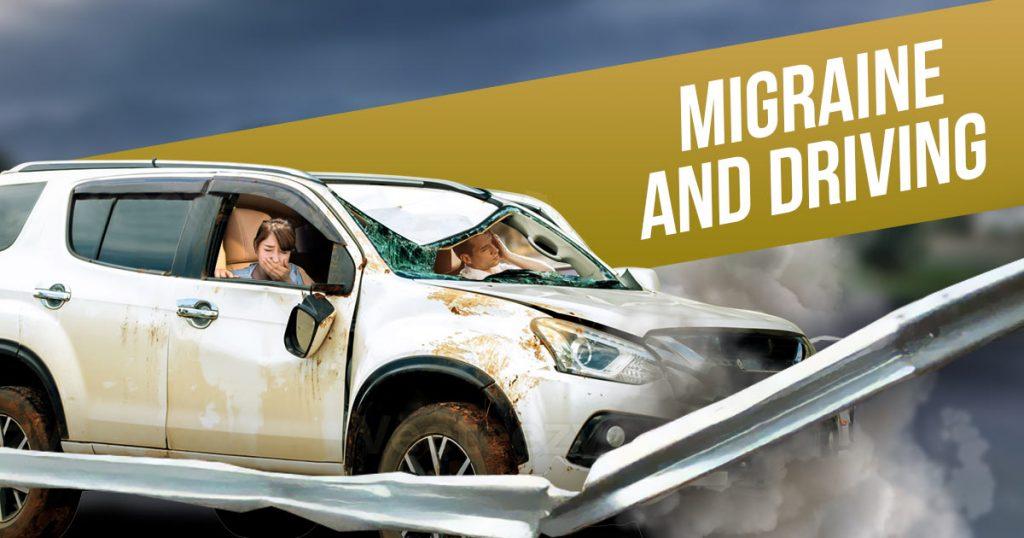Migraines can be tough to handle, causing intense headaches, sensitivity to light and sound, and nausea. Driving might be the last thing you want to do after a migraine. But sometimes, driving with a migraine might be unavoidable. Understand the risks of driving with a migraine, how to stay safe, and other options to keep yourself and others safe.
Understanding Migraines and Their Impact on Driving
Migraines come with a range of symptoms that can severely impair your ability to drive safely:
- Throbbing Pain: Usually on one side of the head, which can be distracting and painful.
- Nausea and Vomiting: It may make focusing and controlling the vehicle difficult.
- Sensitivity to Light and Sound: Driving can be uncomfortable and dangerous when this happens.
- Visual Disturbances: Some people may see bright lights or zigzag patterns when they have an aura.
When dealing with these symptoms, the question arises: Is it safe to drive with a migraine?
Should you drive with a migraine?
It’s not a good idea to drive with a migraine because it can be risky for you and other drivers. Migraines can affect your vision, concentration, and reaction time, raising the chances of an accident. If you can help it, it’s best not to drive when you have a migraine.
Is It Safe to Drive with a Migraine?
Driving with a migraine is usually not safe because the symptoms can make it hard to drive correctly. Migraines can cause:
- Severe headaches that make it hard to focus on the road.
- Being sensitive to sound and light can be annoying and painful.
- Nausea and vomiting can be dangerous while driving.
- Dizziness or vertigo can affect your balance and coordination.
If you have to drive with a migraine, be aware of your symptoms and take steps to reduce the risks. Also, driving with a migraine aura is unsafe because it affects your ability to see and think clearly. Symptoms like flashing lights, blind spots, numbness, tingling, trouble speaking, and confusion can make driving dangerous. If you have a migraine aura, pull over to a safe place and wait for the symptoms to disappear before driving again.
Why does driving give me a headache or migraine?
Several things can trigger a headache or migraine while driving, such as:
- Stress: Driving in heavy traffic or during rush hour can be stressful and trigger a migraine.
- Sensory Stimuli: Bright sunlight, glare from other vehicles, and loud noises can all trigger migraines while driving.
- Dehydration: Sitting in a car for long periods can lead to dehydration and worsening migraines.
- Poor Posture: If you sit in a bad position for a long time, your neck and shoulders may get tense, leading to a migraine.
- Skipping Meals: Not eating long while driving can cause blood sugar levels to drop, triggering a migraine.
What are the precautions for driving with a migraine?
If you have to drive with a migraine, take these steps to reduce the risks:
- Pull Over and Rest: If your symptoms get too severe, pull over to a safe spot and rest until you feel better.
- Avoid Triggers: Avoid bright sunlight, loud noises, and strong scents while driving.
- Stay Hydrated: Drink a lot of water to keep from getting dehydrated.
- Take Breaks: Take breaks often to stretch, go to the bathroom, and eat something if you’re hungry.
- Adjust Your Seat and Mirrors: Make sure your seat and mirrors are set up for comfort and good visibility.
- Use Sunglasses: Sunglasses will protect your eyes from bright sunlight and cut down on glare.
- Avoid Driving Alone: If possible, have someone with you for support and help if needed.
- Maintain Accessibility to Medication: If your doctor prescribes migraine medication, keep it close.
What are the alternatives to driving with a migraine?
If you have a migraine, consider these options instead of driving:
- Ask for a Ride: See if a friend, family member, or coworker can drive you.
- Use Public Transportation: Take a bus, train, or subway if available.
- Call a Rideshare Service: Get where you need to go with an app like Uber or Lyft.
- Work from Home: Work from home or delay your trip until you feel better.
- Stay Overnight: If you’re traveling and your migraine is severe, consider staying overnight in a hotel or with friends or family until you feel better.
When to Seek Help
If your migraines make it hard for you to drive, you should talk to a doctor. They can help develop a treatment plan to manage your migraines and offer advice on handling driving during an episode.
Don’t Drive When Experiencing Migraine
Migraines can make driving difficult and dangerous due to intense headaches, sensitivity to light and sound, and nausea. Do not drive if you have a migraine. Know the risks and take steps to stay safe. Try something else, like calling someone for a ride, taking the bus, or working from home. Talk to a doctor or nurse about how to better control your headaches and stay safe if they often make it impossible for you to drive.
